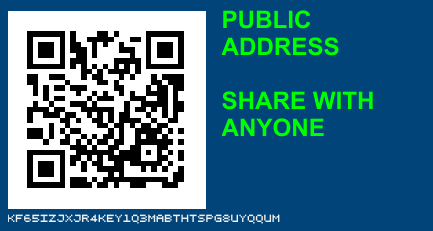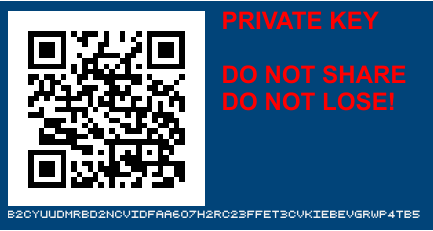
If you haven't done so already, please download and install the KatKoyn software. When running it for the first time, it will take several hours to fetch information from the KatKoyn network, so you can come back here and continue reading while it does that.
KatKoyn is a currency system. Like other currencies, it's value can decrease and increase at any time. It can be exchanged for goods and services, passed from one person to another, and generally used in the same way as any other currency.
Unlike other currencies, it is not backed by gold or any other physical substances. It has no central authority, does not belong to any particular country, government or anyone else.
The 'crypto' part refers to the way that the currency operates. Complex mathematical calculations are used to validate and process the currency, something which is shared between the computers connected to the KatKoyn network. Each computer running the KatKoyn software contains a complete record of every single KatKoyn transaction, and continually receives new information from the rest of the network..
KatKoyn addresses are used to identify a particular quantity of katkoyns. Anyone can check the balance of a KatKoyn address at any time. However only the person with the corresponding key can actually send those KatKoyns to another address.
A KatKoyn address has two parts. The public address and a private key.
A public KatKoyn address starts with the letter K. An example (fictional) is KF65iZJXJr4KEy1q3mAbtHtSpG8uyQquM. This is the address to give to other people so they can sent KatKoyns to you.
The private key, similar to b2cyUUDMRBd2ncviDFAA6o7H2Rc23FfeT3cVkiEBEvGrwp4tB5 is something to be kept secret at all times. Whoever has this can send KatKoyns from the address, and therefore spend or do whatever they want with those KatKoyns. It's equivalent to a key for your own personal bank vault.
The private key is the only thing which allows access to the KatKoyns allocated to a particular address. Without it, the KatKoyns are lost forever. There is no 'forgot key' option. Lose the private key - you have lost your KatKoyns. Permanently. For Ever. Game Over. The End.
Therefore you must keep a permanent record of your KatKoyn addresses and private keys in a secure place. Preferably several places.

 A paper wallet is the public address and private key printed onto a piece of paper.
A paper wallet is the public address and private key printed onto a piece of paper.
More usually, they are printed in the form of QR codes, which makes it easier to enter the address and key into a computer by scanning the code. (The alternative is to type in the address and key, but that would take longer and errors are likely).
These are examples of an address and private key. The black & white image is a QR code, which contains the text printed below it. Either the code could be scanned, or the text entered manually - both are the same thing.
Most paper wallet generators also create fancy graphics to go with the codes - however they are not necessary, just for looks.
Paper wallets are most commonly used to store KatKoyns away from a computer, avoiding the possibility of them being lost or stolen by hackers. Create a new address and private key, print them onto paper, then send KatKoyns to the address. Now the only way to get at those coins is by using the private key printed on the paper, which must be securely stored in the same way as a stack of any other currency.
If that paper is lost, stolen or destroyed, the KatKoyns are gone. Just like any other paper currency.
Wallet software is a more convenient option, as it can create KatKoyn addresses automatically, store your private keys so you don't have to enter then every time, display your current balance and a list of transactions you have made.
However, just like the individual addresses and keys, you must back up your wallet regularly. If you do not, you could lose all of your KatKoyns permanently.
The KatKoyn wallet can create a single backup file containing all of your addresses and private keys. This is the recommended method. You can also export your private keys, one at a time, by providing the public address. However this may not do what you expect - the wallet software uses multiple addresses and keys internally, so the addresses you can see are almost certainly not all of them. Miss one or more addresses, and you risk losing KatKoyns.
Due to the fact that the wallet software contains both the address and private key, it is a risk to keep large quantities of KatKoyns in it. They could be stolen by hackers. Just as you wouldn't keep large amounts of currency in your back pocket, don't keep large amounts of KatKoyn in a software wallet. Paper wallets are a much safer option, where larger amounts of KatKoyn can be securely stored until needed.
A transaction is sending currency from one person to another - or more accurately, from one KatKoyn address to another KatKoyn address.
Since no one knows who controls each KatKoyn address, the process is largely anonymous. However every single KatKoyn transaction ever made is available for public viewing and validation, so anyone can see the balance of any KatKoyn address at any time.
If all of the KatKoyn addresses belonging to a particular person were obtained, it would be possible to know how many KatKoyns that person has. In reality, one person will have multiple KatKoyn addresses, and could create as many others as they wanted at any time, so it is exceptionally difficult to know who has what.
A copy of every transaction is stored on every computer connected to the KatKoyn network.
A block is a group of transactions. Each block also contains a reference to the previous block, and over time, a long line or chain of blocks is created, starting with the very first block, block number 0. The block number is usually referred to as the 'height'.
The chain of blocks is usually called the 'blockchain', a copy of which is stored on every computer connected to the KatKoyn network. This is what has to be downloaded the first time you run the KatKoyn software, and is continually added to at a rate of about one block per minute.
Mining is the process of creating blocks. This is done by complex calculations which combine details of the previous block and recent transactions to create a new block.
As this requires the use of powerful computers and electricity, whoever finds a block is rewarded with a certain number of KatKoyns. This is how all KatKoyns are created.
As time passes, the number of KatKoyns created with each block reduces, until it reaches zero. When this happens, the only incentive for mining will be small fees for processing each transation. Hopefully by then, the value of KatKoyn and the volume of transactions will be enough to create worthwhile fees for those creating each new block.
Updated 27 January 2023. Contact / impressum